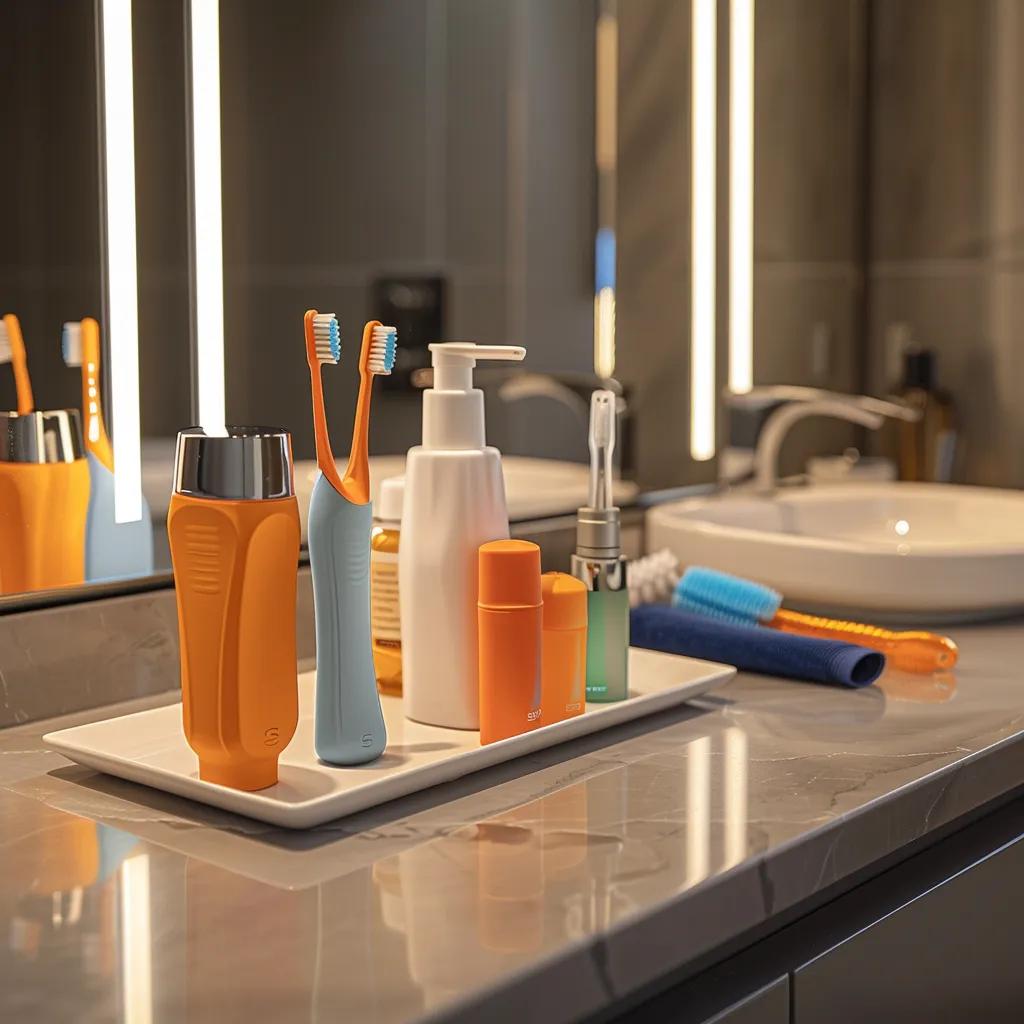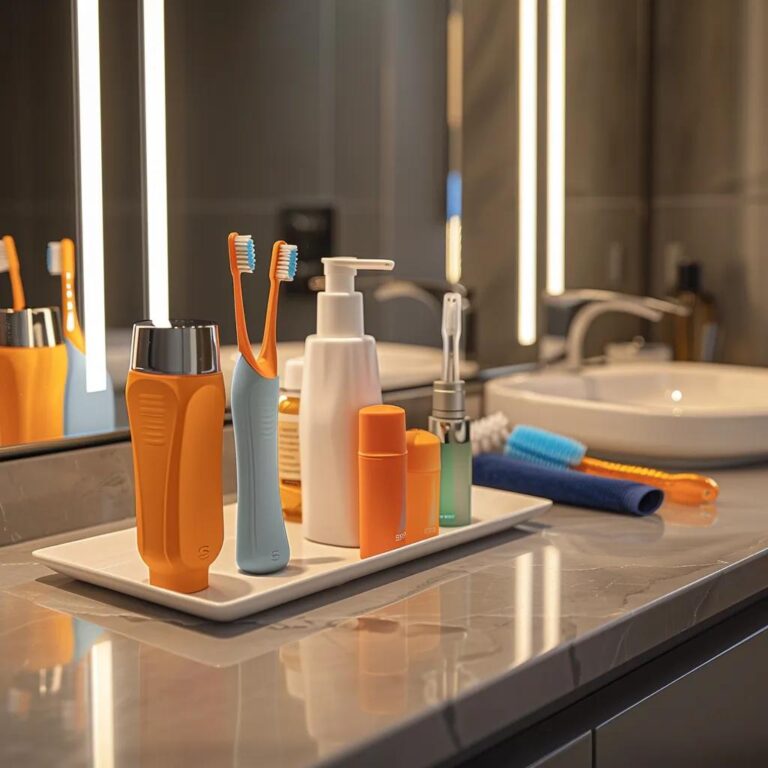

How to Achieve Optimal Oral Hygiene Every Day
Oral hygiene is a fundamental aspect of overall health care. A comprehensive routine—including brushing, flossing, mouthwash, diet modification, and regular dental checkups with a trusted dentist sandgate—not only prevents tooth decay and bad breath but also lowers the risk of conditions such as type 2 diabetes and oral cancer. By mastering proper techniques and timing, individuals protect their enamel, manage plaque, and maintain healthy gums. This article explains each step of a dental hygiene routine with practical tips, and recommendations.
Optimal Oral Hygiene Through Effective Brushing
Brushing your teeth regularly removes dental plaque and prevents tooth decay. Ideally, you should brush twice a day—once in the morning and once before bed—to eliminate bacteria that contribute to gingival recession and inflammation. Each session should last at least two minutes and cover every tooth surface.
What Are the Best Brushing Techniques to Remove Dental Plaque Effectively?
A gentle, circular technique using a soft or electric toothbrush is most effective. Research shows that electric toothbrushes can improve plaque removal by up to 21% compared to manual brushing. The Modified Bass technique—angling the bristles at 45° to the gum line—can remove plaque along the gum margin without damaging the bristles or irritating the gums.
To enhance plaque removal: – Use gentle circular strokes instead of harsh back-and-forth motions. – Hold the brush at an angle to clean below the gum line. – Ensure all surfaces (occlusal, facial, lingual) are cleaned. – Spit out excess toothpaste but do not rinse to prolong the effects of the toothpaste on your teeth.
How to Choose the Right Toothbrush and Toothpaste for Your Needs?
The correct toothbrush and toothpaste are vital. Choose a brush with soft bristles to prevent enamel abrasion and gum damage. Toothpaste should contain fluoride to strengthen enamel and offer antimicrobial protection. An electric toothbrush with a built-in timer and pressure sensor can help ensure effective, safe brushing.
Key points include: – Soft-bristled brushes to avoid irritation. – Toothpaste with 1,000 to 1,500 ppm fluoride. – Options with replaceable heads for electric brushes. – Toothpaste formulations for sensitive teeth if enamel erosion is a concern.
What Are Common Brushing Mistakes and How Can You Avoid Them?
Common mistakes include brushing too hard, using the wrong type of brush, and ignoring the tongue and inner surfaces. These errors can cause enamel wear, gum recession, and missed plaque removal. To avoid this, use gentle pressure, replace brushes every three to four months, and schedule periodic professional cleanings.
Avoid these pitfalls by: – Not scrubbing vigorously. – Using consistent, gentle strokes. – Paying extra attention to back molars, the tongue, and inner surfaces. – Replacing your toothbrush regularly for optimal cleaning.
When Should You Replace Your Toothbrush for Best Results?
To maintain cleaning efficiency, replace your toothbrush every three to four months or sooner if the bristles become frayed. Worn bristles reduce cleaning efficacy and can lead to a higher risk of tooth decay, bad breath, and gum inflammation. Regular replacement is key for continuous antimicrobial and mechanical benefits.
Why Is Flossing Essential and How Do You Floss Correctly Every Day?
Flossing complements brushing by removing plaque and food particles from areas a toothbrush can’t reach, such as between teeth and beneath the gum line. Daily flossing can reduce the risk of gingivitis and periodontitis by up to 40%, protecting gum and tooth support structures.
What Are the Different Types of Floss and Which One Should You Use?
Various types of floss exist, including waxed, unwaxed, tape, and specialty floss for sensitive areas. Waxed floss is often recommended because it glides easily between teeth and resists shredding. For tight spaces or when using orthodontic appliances, dental tape or interdental brushes may work better.
Key differences: – Waxed Floss: Smoother glide; ideal for tight contacts. – Unwaxed Floss: Thinner; may fray on rough surfaces. – Dental Tape: Broader and flatter; suited for sensitive gums or braces.
How to Floss Properly to Prevent Gingivitis and Periodontitis?
Proper flossing involves gently curving the floss around each tooth and sliding it beneath the gum line. Use a clean segment of floss between each tooth to effectively remove plaque and debris, thereby reducing inflammation.
Follow these steps: 1. Take about 18 inches of floss and wind it around your middle fingers. 2. Slide the floss gently between your teeth using a sawing motion. 3. Curve the floss into a “C” shape around each tooth and slide it under the gum line. 4. Use a fresh section for each tooth to avoid reintroducing plaque.
How Can You Floss Effectively With Braces or Dental Appliances?
Flossing with braces or dental appliances can be challenging. Interdental brushes, floss threaders, or water flossers can help navigate around brackets and wires to remove plaque effectively. Additionally, using a fluoridated rinse afterward can aid in clearing residual food particles.
For patients with braces: – Use floss threaders to guide floss under wires. – Consider water flossers as an alternative. – Schedule extra cleanings and check-ups to manage plaque. – Rinse with an antimicrobialmouthwash designed for orthodontic care.
What Role Does Mouthwash Play in Daily Oral Hygiene?
Mouthwash serves as an antimicrobial adjunct by reaching areas that brushing and flossing might miss. It reduces bacterial load, freshens breath, and reinforces fluoride treatment. Regular use of mouthwash can lower the risk of gingival inflammation and tooth decay when used alongside brushing and flossing.
Which Types of Mouthwash Are Best for Your Oral Health Needs?
Different formulations offer various benefits. Fluoride-based mouthwashes strengthen enamel, whereas antiseptic ones help control plaque through antimicrobial agents like chlorhexidine or essential oils. Choose a mouthwash based on your specific risk factors; alcohol-free versions are preferable for those with sensitive gums or dry mouth.
Examples include: – Fluoride Mouthwash: Strengthens enamel and reduces cavity risk. – Antiseptic Mouthwash: Typically contains chlorhexidine to target cavity causing bacteria. – Herbal/Essential Oil Mouthwash: Provides a natural cleaning option without alcohol’s drying effects.
How and When Should You Use Mouthwash for Maximum Benefit?
Use mouthwash as the final step in your routine—after brushing and flossing. Rinse for 30 seconds to one minute to allow active ingredients to work effectively. Avoid rinsing with water immediately afterward so that the ingredients remain concentrated.
Best practices: – Follow the product’s directed volume and timing. – Spit out after use without additional rinsing. – Wait at least 30 minutes before eating or drinking to allow full efficacy.
How Does Your Diet Affect Your Oral Health and Hygiene?
Diet plays a significant role in maintaining healthy teeth and gums. Nutrient-rich foods support enamel strength, reduce gum inflammation, and limit harmful bacteria, while a diet high in sugars and acids can increase plaque and risk of decay.
What Foods Should You Eat to Strengthen Teeth and Gums?
Foods high in calcium, vitamin D, and phosphorus are essential for robust teeth and bones. Dairy products, leafy greens, and nuts help strenghten enamel and support jaw strength. Crunchy vegetables like carrots and celery stimulate saliva production, which naturally cleanses the mouth.
A balanced oral diet includes: – Dairy Products: Milk, cheese, and yoghurt offer essential calcium and phosphates. – Leafy Greens: Kale and spinach provide vital vitamins and minerals. – Nuts and Seeds: A healthy source of fats and proteins. – Fibrous Vegetables: Carrots and celery help clean teeth through natural chewing. – Water: Maintains saliva flow and overall hydration.
Which Foods and Drinks Should You Avoid to Prevent Cavities and Gum Disease?
Limit foods and drinks high in sugars and acids—such as sodas, candies, and citrus juices—to avoid enamel demineralisation. Processed and sticky foods should be eaten sparingly to minimize prolonged exposure to tooth surfaces.
Avoid: – Sugary snacks like candy bars and pastries. – Acidic beverages such as soft drinks and energy drinks. – Highly processed, starchy foods that promote plaque formation. – Frequent snacking that reduces saliva’s cleansing effect.
How Does Sugar Consumption Affect Your Oral Hygiene?
Sugar fuels bacteria that produce acids, leading to enamel erosion, cavities, and gum disease. A balanced diet with reduced sugar intake, combined with regular oral hygiene, can mitigate these effects. Public health initiatives underline the importance of moderating sugar consumption to protect dental health.
Table: Comparison of Key Food Groups and Their Impact on Oral Health
| Food Group | Key Nutrients/Components | Benefit to Oral Health | Considerations |
|---|---|---|---|
| Dairy Products | Calcium, Phosphorus | Strengthens enamel and bones | Opt for low-sugar options |
| Leafy Greens | Vitamins A, C, K, Minerals | Boosts gum health and aids tissue repair | Consume fresh or lightly steamed |
| Fruits (low-acid) | Fibers, Vitamins | Stimulates saliva production | Avoid high-acid citrus fruits |
| Sugary/Sticky Foods | Simple sugars, Carbohydrates | Increases acid production | Limit frequency and quantity |
| Water | Fluoride (in fluoridated areas) | Cleanses the mouth; maintains hydration | Drink throughout the day |
This table highlights how different food groups impact dental health, focusing on their benefits and important considerations.
Why Are Regular Dental Checkups Important for Maintaining Optimal Oral Hygiene?
Regular dental checkups prevent diseases, detect early decay or periodontitis, and maintain overall hygiene. Professional cleanings remove plaque and calculus that daily care misses, while examinations address issues such as tooth loss and gum inflammation.
What Can You Expect During a Routine Dental Appointment?
During a routine visit, a dental professional conducts an oral exam (often with digital x-rays), performs a professional cleaning, and assesses your overall dental health. They review your brushing technique and may recommend fluoride therapy or sealants based on your dental history.
Expectations include: – A thorough exam using modern imaging. – Professional cleaning to remove plaque, tartar, and stains. – Personalized recommendations and treatment advice. – Discussion of dietary habits affecting dental health.
How Often Should You Visit Your Dentist for Preventive Care?
Most patients should see a dentist every six months. Those with periodontal disease or a history of cavities may need more frequent visits. Regular checkups allow early detection of problems, reducing the need for expensive treatments later.
Visit frequency guidelines: – Biannual visits for most individuals. – More frequent appointments for active dental issues. – Custom schedules based on personal risk factors.
How to Find a Trusted Dental Professional for Your Oral Health Needs?
Select a dental professional by reviewing credentials, patient reviews, and service offerings. Recommendations from family and certification by recognized dental associations are valuable. Consider practices that emphasize preventive care and use modern, patient-friendly techniques.
Tips include: – Seeking trusted recommendations. – Verifying qualifications and memberships. – Choosing a practice focused on patient education and prevention. – Ensuring modern technology and techniques are employed.
What Are the Early Signs of Common Dental Diseases and How Can You Prevent Them?
Early detection is crucial to prevent complications like tooth decay, periodontitis, and tooth loss. Symptoms such as persistent bad breath, red or swollen gums, and sensitivity may indicate early signs of gingivitis or caries. A strict oral hygiene routine and regular checkups can stop these issues in their tracks.
How to Recognize Symptoms of Gingivitis and Take Action Early?
Look for red, swollen gums that bleed during brushing and persistent bad breath. Early action with a revised hygiene routine and professional cleaning can reverse gingivitis. Using antimicrobialtoothpaste and a gum-targeted mouthwash is often recommended.
Recognize signs by: – Observing changes in gum color and texture. – Noticing bleeding during brushing or flossing. – Monitoring for persistent foul breath. – Consulting a dental professional promptly.
What Is Periodontitis and How Can You Avoid Its Progression?
Periodontitis is an advanced gum disease where bone and connective tissue supporting the teeth are lost, often following untreated gingivitis. Prevention involves strict plaque control, regular cleanings, and sometimes periodontal therapy with antimicrobial agents. Early treatment, along with proper home care, is key.
Prevent periodontitis by: – Maintaining a strict daily oral care routine. – Scheduling professional cleanings and assessments. – Using specialized mouthwashes or prescribed antibiotics. – Adjusting your diet to reduce foods that exacerbate inflammation.
How Can You Prevent Cavities Through Daily Oral Hygiene?
Cavities result from acids produced by plaque bacteria eroding tooth enamel. Prevent them with regular brushing, flossing, and fluoridetoothpaste use. Limiting sugary and acidic foods, along with preventive fluoride treatments and sealants, is also effective.
Steps include: – Brushing twice daily with fluoridetoothpaste. – Daily flossing to remove plaque between teeth. – Limiting sugary and acidic snacks. – Scheduling regular dental checkups to monitor enamel health.
How Can You Adapt Your Oral Hygiene Routine for Specific Conditions and Life Stages?
Different life stages and conditions require tailored oral hygiene routines. Children, teens with braces, seniors, and pregnant women each face unique challenges. Custom routines help address issues like enamel erosion in children or dry mouth in seniors, and even account for systemic conditions such as diabetes.
What Are the Best Oral Hygiene Practices for Children and Teens?
Children must learn proper brushing and flossing techniques early for lifelong habits. Parents should supervise young children and use only a pea-sized amount of fluoridetoothpaste. Teens with orthodontic appliances may benefit from interdental brushes and floss threaders to keep their braces clean.
Best practices: – Supervise and guide young children’s brushing. – Use age-specific products, including fluoridetoothpaste. – Encourage routine dental visits. – Provide specialized tools like floss threaders for teens with braces.
How to Maintain Oral Hygiene With Braces or Dental Appliances?
Braces and other dental appliances require extra care. Use interdental brushes and floss threaders to remove trapped food and plaque around brackets and wires. Regular professional cleanings are essential to prevent decay and ensure dental appliance integrity.
Recommendations: – Use an electric toothbrush with oscillating bristles. – Floss daily using floss threaders or specialized orthodontic flossers. – Rinse with an antimicrobialmouthwash after meals. – Schedule more frequent dental checkups during orthodontic treatment.
What Oral Care Tips Are Recommended for Seniors and Pregnant Women?
Seniors often face dry mouth, gum recession, and denture issues, while hormonal changes during pregnancy increase gum sensitivity. Seniors should use high-fluoridetoothpaste and moisturizing rinses, whereas pregnant women should maintain rigorous hygiene and consult their dentists regarding safe fluoride use.
Key recommendations: – For seniors: use high-fluoridetoothpaste, moisturizing rinses, and practice gentle brushing. – For pregnant women: maintain consistent oral hygiene and schedule dental visits during the second trimester. – Include a balanced diet rich in vitamins and minerals. – Develop individualized care plans with professional guidance.
Frequently Asked Questions
Q: How can an electric toothbrush enhance plaque removal compared to a manual toothbrush? A: Electric toothbrushes typically remove plaque up to 21% more effectively by using oscillating or sonic technology to reach tight spaces with less force, reducing the risk of gingival recession.
Q: Is it safe to use mouthwash every day, and what should I consider when choosing one? A: Daily use of an alcohol-free, fluoride-based or antiseptic mouthwash is generally safe and beneficial for reducing bacteria; choose a formulation that suits your oral sensitivity and dental needs.
Q: What dietary habits most significantly affect oral health? A: Diets high in sugars and acidic foods contribute to enamel erosion and plaque formation, whereas diets rich in calcium, vitamin D, and fibrous vegetables help strengthen teeth and stimulate saliva production.
Q: How often should children with braces visit the dentist compared to children without braces? A: Children with braces may need dental checkups every 4 to 6 months to monitor plaque buildup around the appliances and adjust their oral care as needed.
Q: Can regular sugar-free chewing gum benefit oral hygiene? A: Yes, sugar-free gum stimulates saliva production, which naturally cleanses the mouth and neutralizes acids, offering a small but valuable boost to daily oral hygiene.
Q: What are the early signs of oral cancer, and how can routine dental checkups help in its early detection? A: Early signs include non-healing sores, red or white patches, and unexplained lumps. Routine dental exams can detect these signs early, allowing prompt referral for further evaluation.
Q: Are there any special recommendations for maintaining oral hygiene for patients with type 2 diabetes? A: Patients with type 2 diabetes should maintain rigorous oral care—including regular brushing, flossing, and professional cleanings—as they are more prone to gum inflammation and periodontal issues.
Final Thoughts
Optimal oral hygiene is achieved through a disciplined daily routine that incorporates proper brushing techniques, regular flossing, the judicious use of mouthwash, healthy dietary choices, and consistent dental checkups. This comprehensive approach not only prevents common dental diseases but also supports overall health by reducing the risk of systemic conditions. Proactive care, combined with the use of specialized tools such as electric toothbrushes and orthodontic flossers, ensures both immediate and long-term benefits. Adopting these practices is an investment in your health, offering enhanced aesthetics and a lowered risk of tooth decay and gum inflammation—a forward-looking strategy for maintaining well-being through all stages of life.







